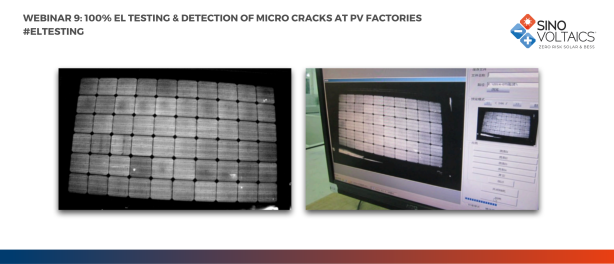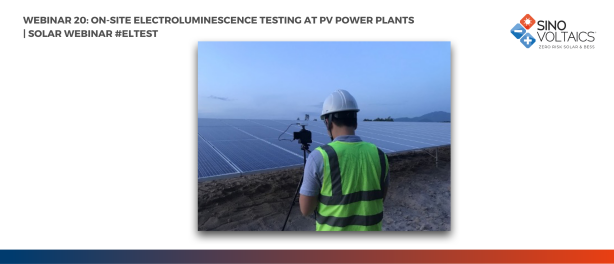Suppose you want to make a cake. What ingredients are required for this, in what quantities and what shall the final cake look like? A good baker will stick to a well-tested and proven recipe that is skillfully and detailedly adhered to during the baking of the cake and reject deviations to the established composition of the cake, unlike the hobby baker.
In the solar PV industry, the applicable (and frequently confused) terms are bill of materials – abbreviated as BOM – and constructional data form (CDF). The aforementioned differences between a hobby baker and a professional baker probably best describe the nuanced differences between BOM and CDF.
Many employees of PV module manufacturers as well as buyers alike tend to regularly confuse these terms, and in many cases even do not know about the existence and meaning of a CDF. This article will explore these nuances between BOM and CDF and explain the related misunderstandings and problems.
What is a Bill of Materials?
A bill of materials or BOM is a list of all material (raw materials, sub-assemblies, sub-sub-assemblies, down to individual nuts and bolts) that is used at a specific point of time to make a finished product.
In the industry, a BOM will be prepared against a specific production order with complete specifications. When specifications change, the materials requirements will change, and that means the BOM will change.
A BOM can be in a modular, multilevel and hierarchical form, with the final product at one level, major assemblies listed in the next level (column), subassemblies of each major assembly listed against that in the next column, and further subassemblies against each in the next column etc., down to the smallest items.
For example, a BOM for production of a printed circuit board (PCB) will include all the components and materials that go into its production like resistors, capacitors, fuses, fuse links, etc.,along with the quantities required.
A good BOM for a typical crystalline silicon photovoltaic (PV) modules will include information such as:
- component type, such as solar cell, superstrate, frame and encapsulatant
- details about the manufacturer of the respective component type
- details about the specific component, including material specifications and characteristics
- quantities of the respective component required in the manufacturing of 1 solar PV module
- material quota
- specific manufacturing details and material coding remarks regarding the respective component
- component purchase dates
The BOM is not only useful to document the raw materials and components used in the production of a product, but it is also helpful for economical procurement and stocking, and with the addition of other costs, helps in estimating cost of the finished product.
What is a Constructional Data Form?
The constructional data form (CDF), also sometimes called engineering BOM, is a comprehensive document that specifically lists all critical raw materials and components as well as design and labelling information for the manufacturing of a product as required per applicable standards.
Constructional data forms are usually compiled during the certification process when qualifying a product’s design according to the relevant design qualification and type approval standard for that product type.
When submitting testing samples, the manufacturer of the to-be-certified product is required to submit detailed documentation about all the raw materials and components used in the production of this submitted product which will also be thoroughly verified by the certification body concerned.
Upon successful testing and consequently certification of that product to the related qualification design standard, the responsible certification body will attach CDF documentation to the certification report.
All components used during certification testing as well as the labeling design and other parameters are fixed in the CDF of this specific, certified product. The manufacturer is obliged to use the components in the CDF to be able to state that their product is certified.
The reason for this strict requirement is obvious: the performance and safety qualities of a product are significantly geared to the raw materials and components used in the production of that product.
When qualifying a product to a standard, testing and related product performance and safety evaluation by the concerned certification bodies takes place only on the basis of its given construction at that point of time.
Solar PV module CDFs
A typical CDF of a crystalline silicon PV module usually contains following information:
- details about the certification-applying manufacturer
- the production facility of that module
- PV module type and model details
- rated power output, usually at standard test conditions (STC)
- mechanical characteristcs, such as dimensions, weight
- electrical characteristics, such as maximum system voltage, over-current protection rating as well as product electrical ratings including open-circuit voltage, short-circuit current, voltage and current at maximum power and maximum power with tolerance
- cell technology type
- applied test specifications
- components and sub-components, naming the specific supplier, detailed information about the component and test marks where applicable. Those components and sub-components include cells, cell interconnectors, superstrate, substrate, frames, adhesives for framesand junction box, junction box, bypass diode, cables fixing tap and more
- rating label and serial number design and content details
- details about warning label and grounding symbol
First of all, it will greatly simply the certification process when a manufacturer uses components, such as junction boxes and solar cells, that are certified or well known in the market – meaning there is plenty of information available regarding the certifications of the components and the constructional data form.
It is common among PV module manufacturers in China and Asia that a CDF contains a range of qualified components and sub-components and their respective suppliers for one and the same component type, so to give the PV module manufacturer greater permissable room for standard-compliant manufacturing, especially addressing the constant need of manufacturers to reduce costs.

BOM in process: raw materials and components at a factory, used for the production of solar PV modules
Qualification design and type approval standards for PV modules
For solar PV modules, there are three major international standards as defined and promulgated by the International Electrotechnical Commission (IEC):
- IEC 61215: Crystalline silicon terrestrial photovoltaic (PV) modules – Design qualification and type approval
- IEC 61646: Thin-film terrestrial photovoltaic (PV) modules – Design qualification and type approval
- IEC 62108: Concentrator photovoltaic (CPV) modules and assemblies – Design qualification and type approval
While IEC 61215 covers the qualification design and type approval of all types of crystalline silicon PV modules, IEC 61646 covers all types of thin-film PV modules, including amorphous silicon (a-Si), copper indium gallium selenide (CIGS), cadmium-telluride (CdTe) and gallium-arsenide (GaAs) modules. IEC 62108 covers the design qualification and type approval of CPV modules.
IEC has many different technical committees that specialize in the various electronic products. For PV modules and also module raw materials and other PV components such as inverters, the Technical Committee 82 (TC82) is the responsible sub-body.
It consists of different specialized working groups (WGs) which are continuously working on new standards or expanding and overhauling existing standards in line with industry and research developments. While WG2 works on standards for non-concentrator PV modules, WG7 specializes in concentrator PV modules.
Currently, the qualification design and type approval standards for solar PV modules are undergoing significant revisions, such as the creation of specific qualification design and ype approval standards for each type of thin-film modules:
- IEC 61215-1 Ed. 1.0 Terrestrial photovoltaic (PV) modules – Design qualification and type approval – Part 1: Test requirements
- IEC 61215-1-1 Ed. 1.0 Terrestrial photovoltaic (PV) modules – Design qualification and type approval – Part 1-1: Special requirements for testing of crystalline silicon photovoltaic (PV) modules
- IEC 61215-1-2 Ed. 1.0 Terrestrial photovoltaic (PV) modules – Design qualification and type approval – Part 1-2: Special requirements for testing of cadmium telluride (CdTe) photovoltaic (PV) modules
- IEC 61215-1-3 Ed. 1.0 Terrestrial photovoltaic (PV) modules – Design qualification and type approval – Part 1-3: Special requirements for testing of amorphous silicon (a-Si) and microcrystalline silicon (micro c-Si) photovoltaic (PV) modules
- IEC 61215-1-4 Ed. 1.0 Terrestrial photovoltaic (PV) modules Design qualification and type approval – Part 1-4: Special requirements for testing of copper indium gallium selenide (CIGS) and copper indium selenide (CIS) photovoltaic (PV) modules
- IEC 61215-1-5 Ed. 1.0 Terrestrial photovoltaic (PV) modules – Design qualification and type approval – Part 1-5: Special requirements for testing of flexible (non-glass superstrate) photovoltaic (PV) modules
- IEC 61215-2 Ed. 1.0 Terrestrial photovoltaic (PV) modules – Design qualification and type approval – Part 2: Test procedures
More details about the design qualification and type approval standards for solar PV modules as well as other important standards can be found on our PV module certification world map.
CDF versus BOM and compliance issues
In simple terms, while a PV module BOM can be regarded as the composition information document of a PV module of a specific production run during a specific point of time, the CDF can be regarded as the qualfied, valid and certified “recipe” of a PV module.
It is not rare that Asian manufacturers – especially in China – modify raw materials, components and even design details during mass production of solar PV modules. Major triggers and reasons for these modifications are:
- manufacturer changes raw material supplier in order to reduce costs
- raw material is modified or even phased out by the supplier
- raw material supplier is out of business
- new technology developments, such as for example new solar cell types
- buyer-side requirements: buyer asks the manufacturer to use specific raw materials for the modules purchased
Strictly said, the materials listed in the BOM must match those of the CDF. Deviations from the CDF in usage of materials and components construe design changes that may potentially affect the performance of a PV module, therefore manufacturers are obliged to notify the certification bodies of this and either update the CDF of a module model after consultation with the certification body or even be required to subject the specific module model to re-testing.
However, as raw material changes are often frequent and rather fast, some manufacturers rather opt to skip and ignore this time- and cost-intensive process and sell their modified modules with the qualification design and type-approval standard certification mark printed on the label of the very same product. Basically, selling an uncertified product.
Without at least witnessing the use of qualified raw material and components as per CDF on-site during production, such as during an in-line inspection at the factory, it is very difficult to trace the original components starting from a readily assembled PV module.
Being subject to regular changes and compiled by the manufacturer itself, there is no 100% guarantee that a BOM as compiled by the manufacturer will truly reflect the real and whole composition of a PV module.
Some manufacturers may knowingly exploit this loophole and sell modules made of significantly cheaper low-grade components behind the protecting curtain of the qualification design certification mark obtained earlier.
In some countries, regarding solar PV off-grid systems there is no requirement for the modules to be certified. Further there are a couple of countries in Africa, South America , Asia and Oceania that do not have strict requirements on connecting uncertified solar modules to the grid. However the large majority of countries do require PV certifications, especially compliance to the major design qualification and type approval standards.







Frank
on 03 Oct 2019Allyn White
on 12 Mar 2017Ricardo
on 20 Dec 2016